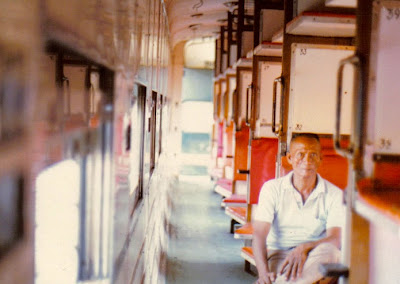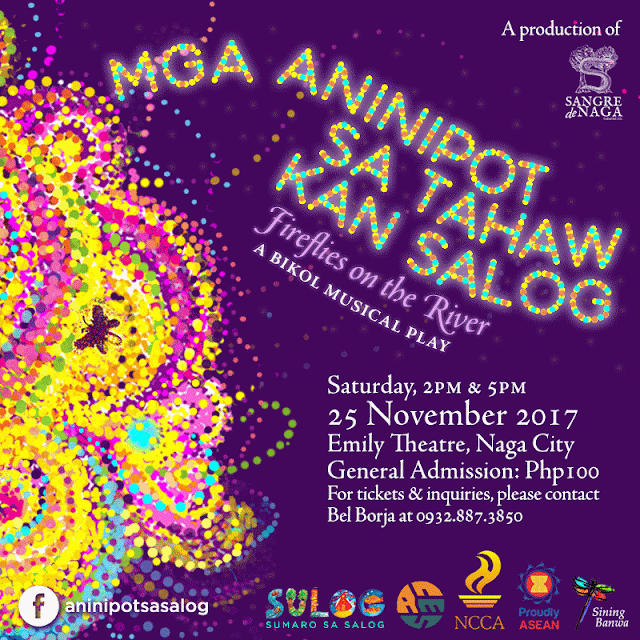Bikol-ness

IF THERE is something we’ve learned from the recent Bikol Arts Festival—which Naga City hosted, it is the full realization that in many ways we have lost our touch with what Bikol culture really is. And yet, the whole festival came in and out, despite this, and made clearer the very picture of our hunger—and resolve—to present something ‘more’ Bikol next time. Or the question is: have we ever really got in touch with the Bikol-ness of our ‘cultural’ endeavors in the first place? For at present, this Bikol-ness itself seems so elusive and deceiving as the eel when quantum-quick underwater. What happened?
For the fixing job, we could only look at other cultures and see how their cultural workers labor to revive, especially when in a similar case like ours. I personally envy the way Holy Angel University in Pampanga consolidated all the efforts to make Kapampangan culture shine again with its Kapampangan Studies Center. There, cultural efforts are no longer confined to just mere presentations, or worse, street dances—which NCCA dreads most. At HAU, the library of Kapampangan studies is just awesome. It houses perhaps every research works conducted on Kapampangan music, visual arts, literature, dance, theatre, and other cultural components. Now, this is something that I think we have to emulate.
In the last BAF, I was struck in awe by the sight of the children from Kwerdas de Naga whose way with violin is I think already above entry level. The quality of music produced by their collective playing was beyond nice; a level of sublimity was achieved. But the pieces rendered failed to give the capability to create music. Aside from an instrumental rendition of ‘Sarung Banggi’, which I think we should find replacement for as the representative tune for Bikol for the sheer reason that it is already overused, I don’t find Pachelbel’s ‘Kanon,’ ‘I Will Survive,’ and other more popular melodies as embodiment of the musical culture of Bikol. An intermediate arrangement perhaps of ‘Ano daw idtong sa gogon?’ or ‘Salampating Guminaro’ may do. In this case, again, we lack research, or we just failed to read. We can have the latter option because the Bikoliana Collection at the Roco Library, even if still lacking, will considerably help us a lot on this.
This phenomenon is present in other genres as well, except perhaps in history and literature, where there is a generally active atmosphere among individual writers intensified more by obvious relocation of literary centers from Manila to the regions. Besides, these cultural components are immortalized in the codices found in our libraries. But despite this, literature was not even represented in BAF (despite the city government’s invitation). And so we can just ask: where too have all the writers gone?
It would be best, I suggest, that in the next celebrations of BAF, an equally substantial time should also be given to studies, lectures, discussions, fora, on our culture. We have a lot of people to tap, there’s Dr. Danny Gerona, Tito Valiente, Dr. Lilia Realubit, Dr. Antonio Hila, Jazz Llana, Abdon Balde Jr., Dr. Henry Totanes, Joe Obias, Frank Peñones Jr., and many more. We can never hold legitimate presentations on our culture if in the first place we are groping as to what really consist the Bikol-ness of it. Otherwise, we will just replicate variety shows and stage programs, and hold nothing unique and special and ‘Bikolnon’ in our efforts.
I see this as a void still because in the celebrations of the Philippine International Arts Festival, in the CineRehiyon (for film) and Taboan: The Philippine International Writers Festival (for literature), Bikol was significantly represented. And the dominant question for us representatives was: what are you fellas doing there in Bikol about your culture?
In the end, I believe BAF was a success. Cheers for the city government of Naga, especially Councilor Badette Roco! More than it having been enjoying to watch, and despite the voids in its presentation, BAF challenged us to get to know more our identity as Bikolanos. Who we really are? What makes us true Bikolanos? What can we do as a people to revive our cultural heritage? What can we do to enrich it all the more?


Comments